80 years later: Danes and Australians remember Australian pilot Norm Cooper
Sigurd Sørensen was only seven years old the night Aussie pilot Norm Cooper’s plane went down. The force of the explosion blew out the windows of his family’s farmhouse.

A wreath of Australian flowers will be laid next week at a roadside memorial in Jutland, Denmark
The flowers, which have been sent for 30 years on this day, indicate the warm bond that has tied the Cooper family to Denmark since the family learned of his death. Even now they are uncovering more details from Danish witnesses.
Cooper’s wife, Bernice, who had a daughter, Kay, aged just one at the time of his death, for decades feared he had been tortured by the Germans.
INTERACTIVE SPECIAL: 66 MINUTES OF HELL
It was only when a Danish witness, Gunnar Hounsgaard, sought her out for the 50th anniversary that Bernice, who had since remarried a returning airman, Doug Quarti, discovered that Cooper’s death was instant.

A year after Bernice died in 2008, some of her ashes, including the champagne cork she and Cooper popped on his final night before heading to war, were scattered on his grave in Denmark.
Daughter Kay died last year and the family, including her daughter Ainslie Farson, is organising for some of her ashes to be sprinkled next to Cooper too.
“My grandmother never spoke about Norm until much later and she said he was a very charming man. I think she was besotted by him,’’ Ms Farson said.
Eighty years ago today, high above Denmark, Cooper’s Lancaster bomber, HK537, from the RAAF’s 463 Squadron, was hit by debris from an exploding Allied plane which had been attacked by a German fighter.
66 Minutes of Hell
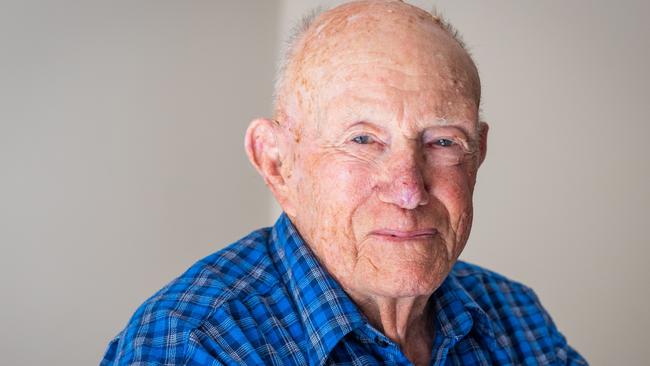
‘Your thoughts of living much longer were a bit bleak’
Bill Purdy fought through the most dangerous theatre of WWII as a pilot with Bomber Command. Every time he took off for Germany he stood a 10 per cent chance of not making it home.
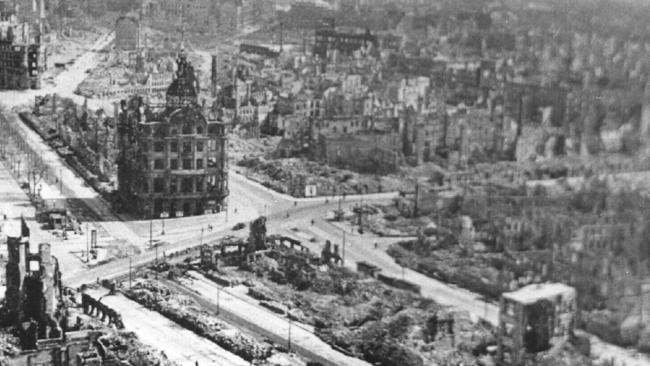
How Bomber Command was airbrushed from history
Politicians cancelled the important role Bomber Command played in WWII after a devastating attack on the city of Dresden which killed 25,000 people.
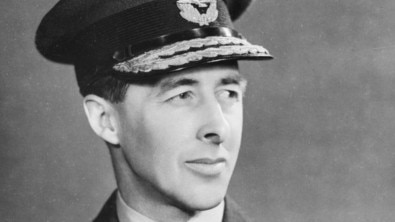
Little-known Aussie became one of the great wartime leaders
‘Brilliant’ Queenslander Don Bennett’s pivotal role with the Bomber Command’s Pathfinders made him one of the Allies’ greatest leaders of World War II.
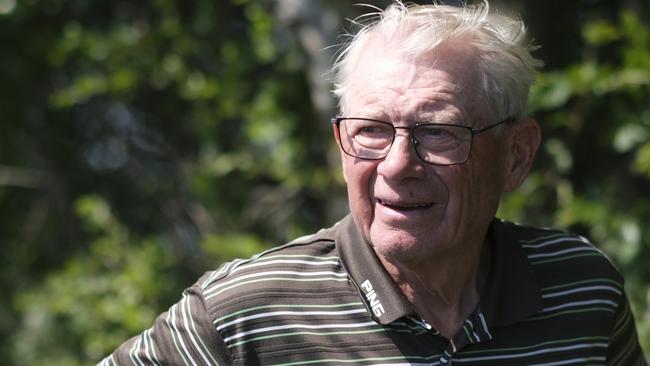
Danes can never forget Aussie airman’s ultimate sacrifice
Sigurd Sørensen was only seven years old the night Aussie pilot Norm Cooper’s plane went down. The force of the explosion blew out the windows of his family’s farmhouse.
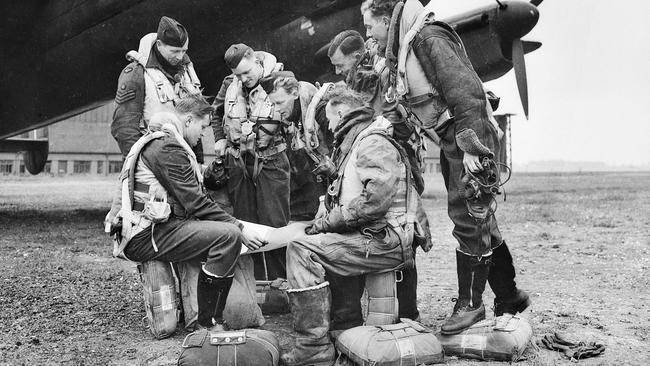
Radical radar breakthrough helped defeat Nazis
Six Bomber Command crews were reportedly ‘thrilled with our new toy’ but despite having a wartime technological marvel on-board none of their planes survived.
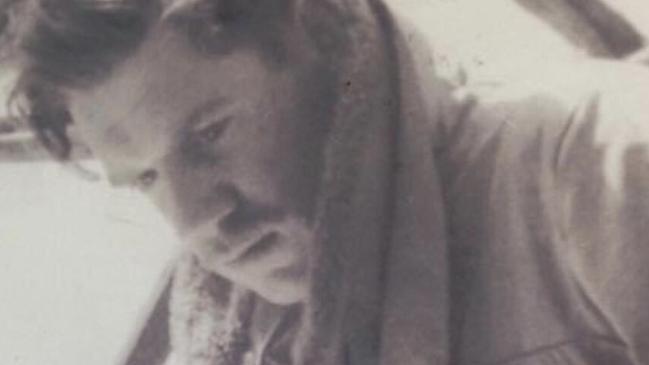
WWII hero with a compass hidden in his comb
Australian airman Alan McCormack survived being shot down over Denmark, a plunge into the frozen Baltic Sea, and a brutal prisoner-of-war camp, to make it to freedom.
It was desperately unlucky. Cooper had, because of engine trouble, already abandoned his mission to bomb Berlin and had set course back to Britain. Those killed alongside Cooper when HK537 went down were his navigator, a headteacher called George Jeffreys Kerr, from Springvale, Victoria, and the bomb aimer, Lewis Havelock Christmass, 26, from Subiaco.
Six minutes earlier the crew of another Lancaster, JB412, had parachuted out after being hit by fire, with Queenslander John Tree fighting for his life in the icy waters below.
A third plane, HX294, piloted by Victorian real estate agent Alan McCormack, found itself in peril over Denmark an hour later.
On the island of Als, Gunnar Hounsgaard, 17, and his older brother Henning were at their dairy farm awake after midnight because of the noise from more than 650 Allied planes flying above. Hounsgaard would go on to make it his life’s work to document the deaths of Allied aircrew in Denmark after what followed.
He had written: “We were aware that something was wrong, and as we see a plane in flames coming out of the clouds we realise the danger … I throw myself down behind the counter and feel three detonations. I look back for my family and see the rooms lit by the explosions and the blinds and curtains are horizontal due to the air pressure from the explosions.”
Just up the dirt road, Sigurd Sørensen, only seven years old, had been listening to the engines of the Lancasters when he too saw the huge explosion and a fiery orange glow.
Burning aircraft parts rained down on their farm, Pommersgaard.

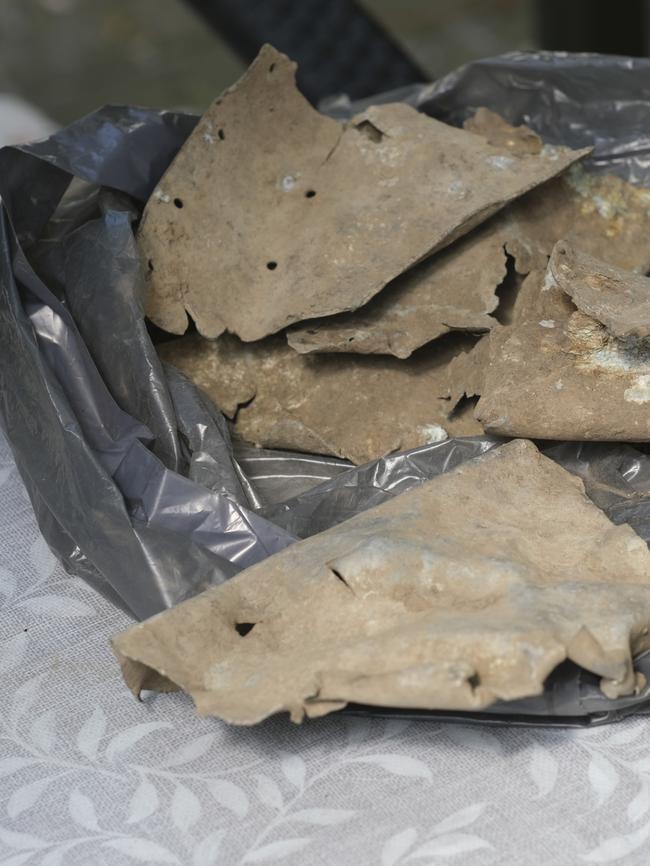
“My heart was pounding,’’ Mr Sørensen, now 87, told The Weekend Australian at his Als farmhouse, explaining how the windows were blown out with the pressure of the explosion.
At first light, the German military removed the airmen’s remains in sacks. Days later while ploughing, Mr Sørensen’s father, Christian, came upon the body of an airman who had been thrown out of a destroyed aircraft lying 100m away.
Not wanting the Germans back on their land, the Sørensens buried him in the field, with a local priest officiating, erecting a broken propeller blade inscribed: “An English airman here rests with honour far from his home and his loved ones. 29 January 1944.”
Mr Sørensen’s mother Kate planted a willow tree to shade the grave and every Saturday morning the family placed fresh flowers and paid their respects.
Soon after, German sympathisers tried to poison the tree.

But now, nearly 80 years on, Mr Sørensen gestures expansively: “Look at it.’’
Remarkably, three saplings sprouted from the base and are now 15m high.
Even after all this time Mr Sørensen is still finding pieces of wreckage across the field. He pulls out a bag filled with mangled metal. “This is (collected) from last year,” he says. Mr Sørensen has had some Australian family members arrive at the farm to see the site of the crash and he keeps a file of documents relating to it.
“That’s our plane,’’ he says protectively as he rifles through a folder, pointing to an artist’s rendition of HK537.
Ms Farson said the family had some of the wreckage from Mr Sørensen and they planned to visit him and the Hounsgaard family soon. “Our friendship with the Danes will continue,’’ she said.


To join the conversation, please log in. Don't have an account? Register
Join the conversation, you are commenting as Logout